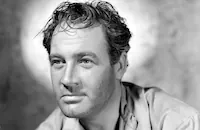The Sign of Four
Cast & Crew
Rowland V. Lee
Arthur Wontner
Isla Bevan
Ian Hunter
Gilbert Davis
Graham Soutten
Film Details
Technical Specs

Synopsis
Major Sholto is in command of a convict settlement in the Andaman Islands. He discovers that convicted murderer Jonathan Small knows the whereabouts of the hidden treasure of an Indian Rajah, located somewhere on the island. Sholto forms a partnership under "The Sign of Four" with his assistant, Captain Morstan, and the convict to split the treasure evenly, though Small swears revenge if the two men betray him. Sholto and Morstan find the treasure, and Morstan is soon murdered, with the major making his way back to England with his ill-gotten riches. Years later in London, the wealthy Sholto is still fearful of Small's threatened revenge. When he learns of the convict's escape, he sends for his two sons, Bartholomew and Thaddeus. Before he can tell his sons the whereabouts of the jewels, however, Sholto is killed. While Bartholomew seeks the treasure, his brother contacts Morstan's daughter Mary as he feels she is due her father's share of the jewels. Thaddeus sends Mary the Rajputana pearls, the only discovered part of the treasure, as a sign of his good faith. Bailey, Small's accomplice, learns of this, and visits Mary in her flower shop. The next day, she receives two letters: one from Thaddeus asking her to meet him and another threatening one from an anonymous source. Mary contacts noted detective Sherlock Holmes, who, with his assistant, Dr. Watson, accompanies Mary on her meeting with Thaddeus. Thaddeus tells them that his brother has found the treasure, but now refuses to share it with Mary. They go to the Sholto home, where they discover the murdered Bartholomew, with a piece of paper near his body, signed "The Sign of Four." Meanwhile, Small works in a small fair with his servant, Tonga, and the tattooed Bailey. Watson learns of Bailey's visit to Mary's shop and his association with Small. He and Mary go to the fair, where she immediately recognizes the tattooed man. While Watson tries to telephone for help, Mary is abducted by Small and his gang. Holmes, disguised as a taxi driver, traces Small to the docks, then down the river. In a high-speed chase in motor boats, Holmes and Watson catch up to the criminals. During a fierce battle inside a warehouse, Tonga is shot dead, while Holmes pushes Small down an open trap door into the river. Watson captures Bailey, then finds the bound, but uninjured Mary. Upon releasing the young woman, the physician kisses her. Holmes is astounded by his friend's act of affection, to which Watson replies, "Elementary, my dear Holmes," then kisses Mary once more.

Cast
Arthur Wontner
Isla Bevan

Ian Hunter
Gilbert Davis
Graham Soutten
Edgar Norfolk
Herbert Lomas
Clare Greet
Miles Malleson
Roy Emerton
Togo
Mr. Burnhett
Kynaston Reeves
Crew

Film Details
Technical Specs

Quotes
Trivia
Notes
The film was released in Great Britain by RKO. There is some conflict on the directing credits for this picture. While the pressbook contained in the copyright records claims that the film was directed by Graham Cutts, an article on the same page credits the direction to Rowland V. Lee. Variety credits Lee as the producer, while other sources credit both Lee and Cutts with the direction. Some contemporary sources list the title as The Sign of the Four. This was the third of five British films in which Arthur Wontner played the famous detective. Modern sources also include Moore Marriott (Mordecai Smith) in the cast.
The source material has been filmed numerous times, including the 1913 silent The Sign of the Four, starring Harry Benham and produced by Edwin Thanhouser, and the 1923 British The Sign of Four produced by Stoll, starring Eille Norwood and Isobel Elsom, and directed by Maurice Elvey. For information on other "Sherlock Holmes" films, consult the Series Index and see the entries above for the 1939 The Hound of the Baskervilles and Sherlock Holmes.












